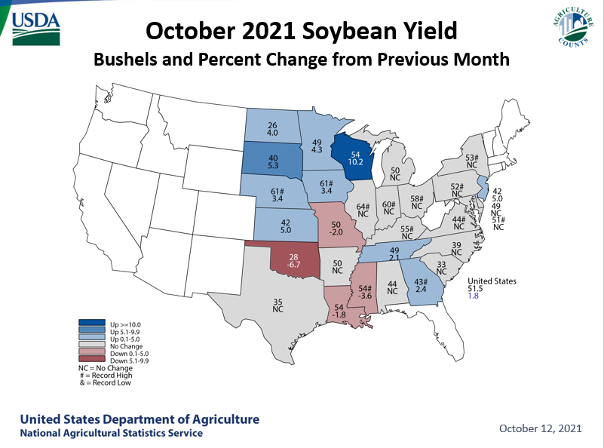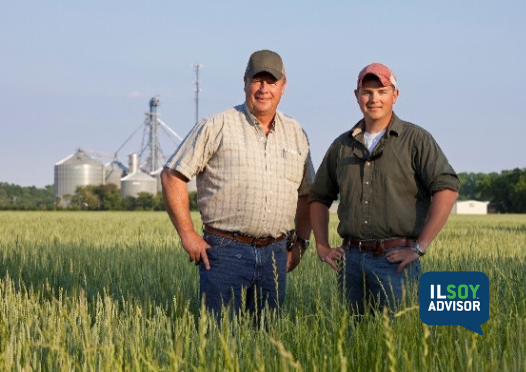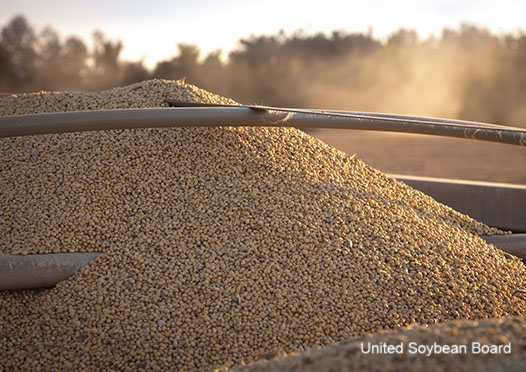ILSOYADVISOR POST
NASS Series: The Basics of NASS Reports
Hello everyone. My name is Mark Schleusener and I am the Illinois State Statistician for USDA- NASS. I hope that each of you have had a safe and bountiful harvest so far. If you are still running the combine, please be careful and put safety first.
The IL Soybean Association asked me to write a series of blog posts and I’m glad to do it. I really appreciate the opportunity to connect with Illinois’ soybean farmers. I hope I can answer some of your questions and provide insight into how NASS operates and why we conduct our surveys of farmers and ranchers.
Please know this first: every report we get from you is confidential by law and exempt from the Freedom of Information Act. We combine many reports together to publish statistics on domestic agricultural production and prices. No individual reports are ever shared with anyone.
Our Pledge of Confidentiality is the first lesson that all NASS employees learn, and we re-enforce that lesson every year with all staff. Each year, we all sign a form indicating that we understand the rules for confidentiality of reports, and we understand the penalties for not following those rules. The penalties are severe including fines and jail time. Full details are available at this link.
So, what should I tell you all about NASS? Most of you probably know at least a little about us. We are the group that sends surveys to you in the mail, calls you on the phone, or drops by to see you in person. Then we publish reports that people discuss (and sometimes cuss) for a day or two. With this series of articles, I hope to explain more about the mission of NASS and the procedures we use to ensure the confidentiality of your data and the accuracy of our reports.
All NASS employees know that our reports can have an impact on the agricultural markets. We work very hard to ensure that all data are accurate. Sometimes we must recontact you and ask you to explain an unusual situation. Our goal is to ensure accuracy for every individual report, so the overall state totals and averages are as accurate as possible.
NASS reports include a section on accuracy, or reliability, of the data we publish. The table below was published on October 12 in the Monthly Crop Production Report and it shows the reliability of US-level forecasts for several commodities.

Here is a brief explanation of the stats in the table above: The “Root Mean Square Error” for the October 1 corn for grain production forecast is 1.9 percent. This means that chances are 2 out of 3 that the current production forecast will not be above or below the final estimate by more than 1.9 percent. Chances are 9 out of 10 (90 percent confidence level) that the difference will not exceed 3.3 percent.
In addition to tables of numbers like the one above, NASS also creates maps that tell the story of crop yields or livestock inventories across the country. The map below is part of the Executive Briefing for the October Crop Production Report. More of those briefings are located here.

Over the few months, I hope to touch on several topics including the following:
- Why is there a need for crop and livestock reports?
- Who uses the reports that we publish?
- How did the COVID pandemic impact NASS and our surveys?
- How does NASS ensure that reports are kept confidential until the publication?
- What else does NASS do besides crop production reports and livestock inventory reports?
- How have NASS surveys changed over the years? What are some new processes that NASS is using and how will they impact you?
- I will also share some information about the 2022 Census of Agriculture. The Census is the biggest project that NASS conducts and it only happens every 5 years. We will try to contact every farmer in the country and produce county-level statistics on crops, livestock, economics, environmental issues, and the demographics of farmers and ranchers.
FOR THE FUTURE: You have some influence on future topics for these blogs. Use the comments feature to write questions or suggest topics for future articles. The staff of the Illinois Soybean Association will ensure that I see your comments and I will respond.
Let me finish this blog post by saying that the staff of NASS has great respect for the work that you and your family do. We understand the many challenges of farming and ranching and we understand there are many demands on your time, including our surveys. We will work with you to make it as easy as possible for you to report to us. If you prefer to report online, you can do that for nearly every survey we do. If you prefer a phone call or email message, just let us know. And if you prefer to speak with the same interviewer all the time, we can arrange that as well.
I wish you all the best and hope that you and your family are all happy and healthy.





Comments
Add new comment